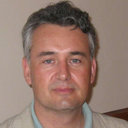[The history of neuro-ophthalmology in Edinburgh. Part I].
Palabras clave
Abstracto
The Edinburgh Medical School occupies a unique position in the history of medicine. It gave the three famous clinicians and scientists who significantly developed the fundamentals of neuro-ophthalmology: Sir Charles Bell, Douglas Argyll Robertson and Harry Moss Traquair. Sir Charles Bell (1774-1842) was a Scottish anatomist, physiologist, neurologist and surgeon who enjoyed a distinguished career in London and Edinburgh during the first half of the nineteenth century. He was a prolific medical writer, a brilliant researcher and a skilled artist. Argyll Robertson (AR) (1837-1909) was the first surgeon in Scotland to practise entirely in the field of ophthalmology. In 1869 Robertson published the records of cases, which showed that disease of the spinal cord is sometimes associated with loss of the light reflex of the pupil but retention of its movement in accommodation. Harry Moss Traquair (1875-1954) was one of the founders of neuro-ophthalmology, being concentrated on bitemporal hemianopia, the course of the geniculo-calcarine visual pathway, pituitary tumours, optic nerve diseases (including acute retrobulbar neuritis), tobacco amblyopia and traumatic lesions of the optic tract. In his many publications, his most outstanding contribution to medical knowledge was the work which culminated in the publication, in 1927, of "An Introduction to Clinical Perimetry".


